It’s that time of the year where ghouls and ghosts take over our streets. Since I had been on a Disney kick I was thinking fondly about the Haunted Mansion at Disneyland. I had talked about
the attraction in the past and compared it to the God of War series. Specifically how the attraction, and game had richly themed environments. With that in mind I was wondering about how it was presented in game form.

I discovered an old Disney game that had a dedicated Haunted Mansion stage. Mickey no Tokyo Disneyland Daibōken was a game published by Tomy for the Super Famicom (SFC) in 1994. The game featured Mickey and his friends at Tokyo Disneyland. Mickey was trying to get his friends together to practice for a concert. Each friend just so happened to be located in a different area of the park.

There were bad guy weasels trying to keep Mickey from his duties as he traveled around. Of course Mickey had to be able to fight against bad guys, but in a Disney game you couldn’t really be too violent. So Mickey was given two types of balloons that he could use on his adventure. The water balloon he could bounce off of, as well as throw at his enemies. Then there was a helium balloon that allowed him to float to higher platforms, of breeze over gaps. Parents wouldn’t be able to object to Mickey defending himself with balloons after all.
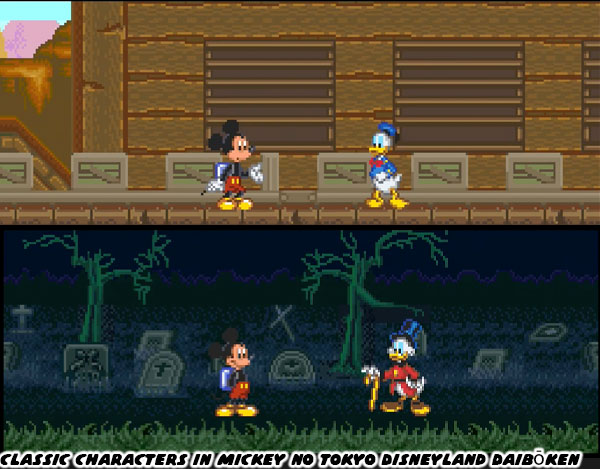
The big attraction at each land was the basis for each stage. It was neat seeing how things like Big Thunder Mountain, and the Pirates of the Caribbean were turned into platforming levels.
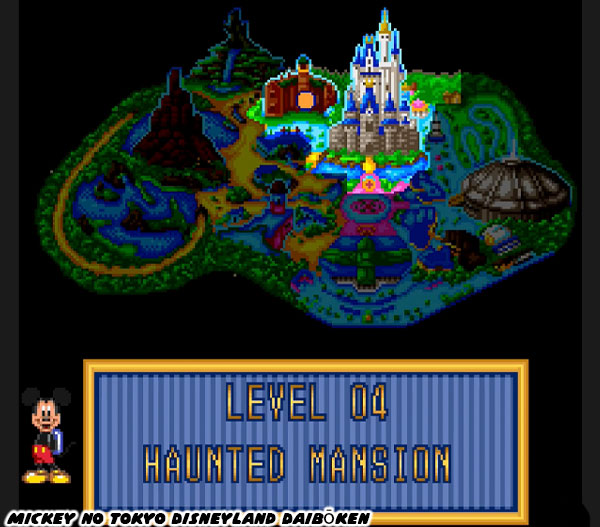
The fourth stage was set in the Haunted Mansion. That attraction was arguably the greatest dark ride ever created. It was layered with so much detail that it developed a cult following. Even I was not immune to its importance in theme park history. In fact
I wrote about the Hatbox Ghost 10 years ago on this blog. You can read about
the history of the Haunted Mansion on the Disney Family Museum page. The fact that the Japanese game was able to turn iconic scenes featured in the attraction into actual stages was mind blowing. The “stretching room” for example was amazing, it took advantage of the SFC’s fabled “Mode 7.”
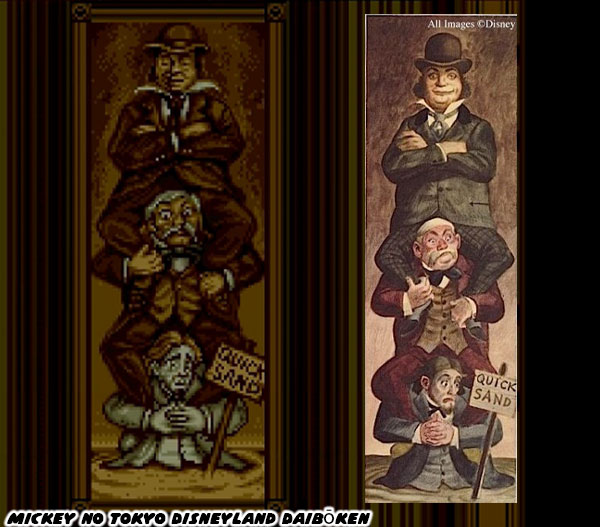
The attraction did not have a definitive story, but was rather a collection of spooky vignettes. An official album tried to tie together the various scenes. However many things were added, or removed through its history. Each of these changes were embraced by the fans. Fan theories spread among the community, in the ‘80s these were discussed in fanzines, and would eventually make their way online.
Even leftovers from a refurbishment got a legend all to themselves.
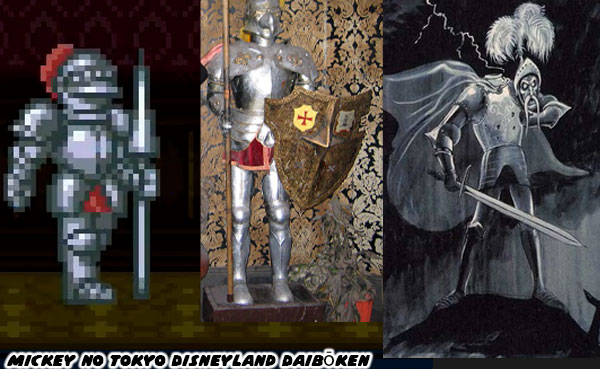
The game even featured animated suits of armor. This was a brilliant callback. In the early days of the attraction in the late 1960’s they actually had cast members wearing the armor, and pop out to scare riders. This was eventually turned into a stationary animatronic that rattled.
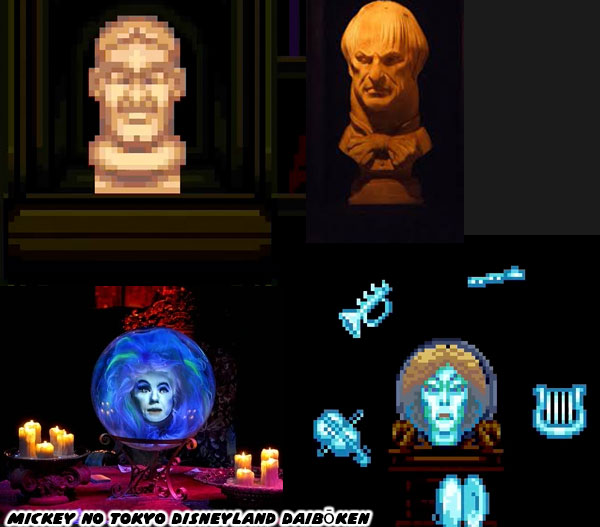
The busts that followed visitors in the foyer, and the head of Madame Leota in a floating crystal ball also appeared in the game. The developers at Tomy had certainly done their homework. The attraction was filled with 999 Happy Haunts. There was plenty to pull from, and many ghosts that people should expect to see in a game.
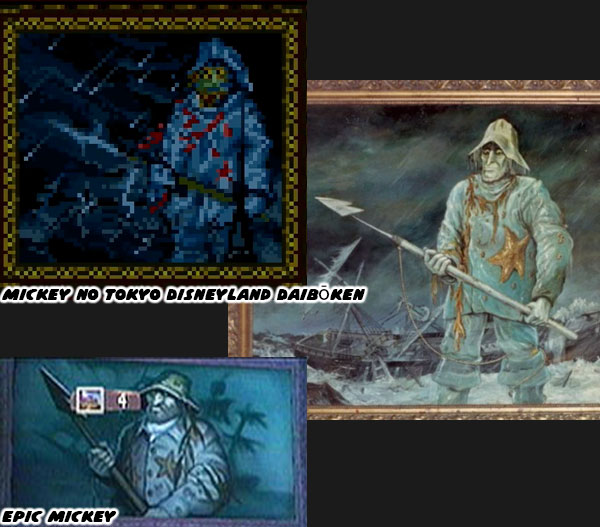
The deepest cuts in the game were the ghost portraits. Not every painting by Disney Animator / Imagineer Marc Davis was featured in the original attraction, or the follow ups in Florida or Tokyo. The ghostly fisherman was part of a pirate theme that had originally been pitched for the attraction. The mariner with the harpoon had appeared in both Mickey no Tokyo Disneyland Daibōken, as well as Epic Mickey.
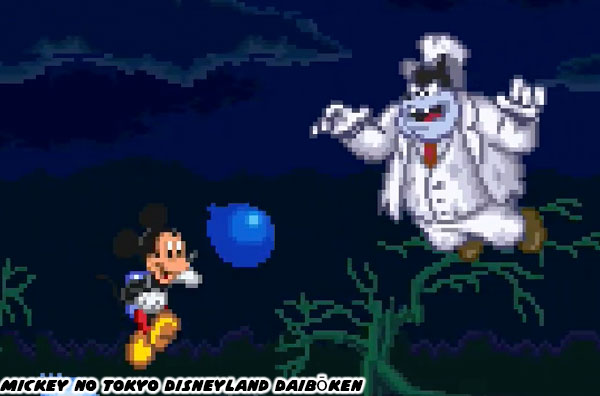
At the end of each stage there was a version of “Pegleg” Pete waiting to challenge Mickey. He wore a costume that was appropriate for the particular attraction. In Stage 4 Pete was waiting in the mansion graveyard. He was a pale blue color, and wore a pale victorian suit as many of the ghosts did in the attraction. He floated around the stage, and shot plasma balls at Mickey. As far as I know this was the first and only time this version of Pete had ever appeared in an officially licensed game.

In honor of this eerie version of Pete, and just in time for Halloween I decided to make an illustration of “Phantom Pete.” What do you think? Should Disney revisit platform gaming? Tell me about it in the comments section. As always if you enjoyed this blog, and would like to sponsor me
please visit my Patreon page and consider donating each month, even as little as $1 would help make better blogs and even podcasts!




















No comments:
Post a Comment